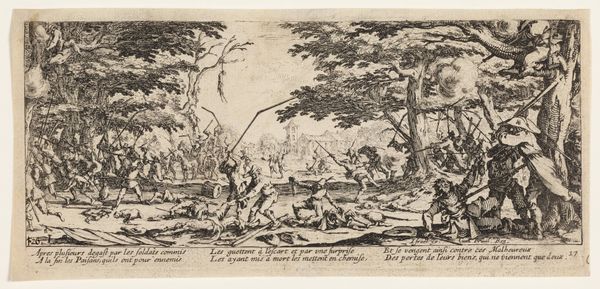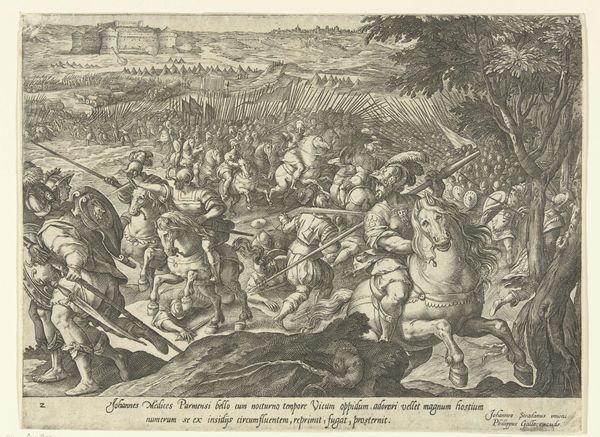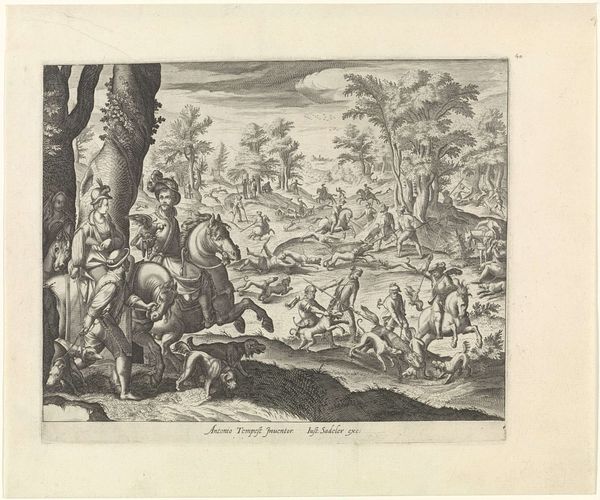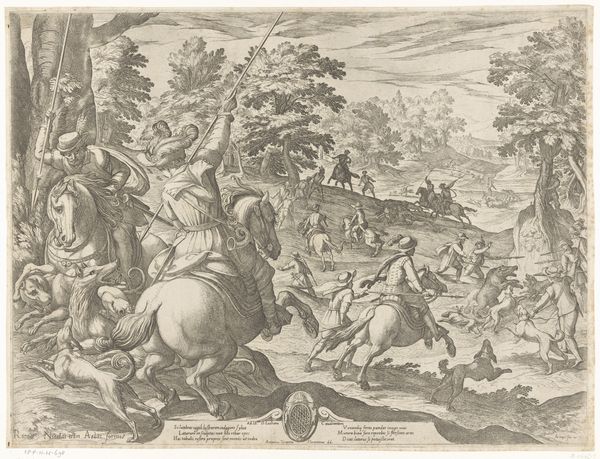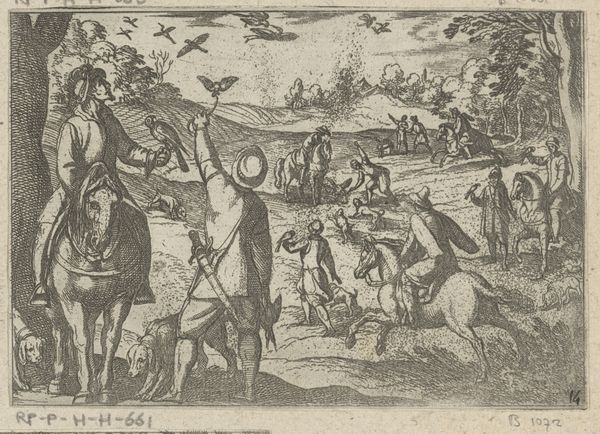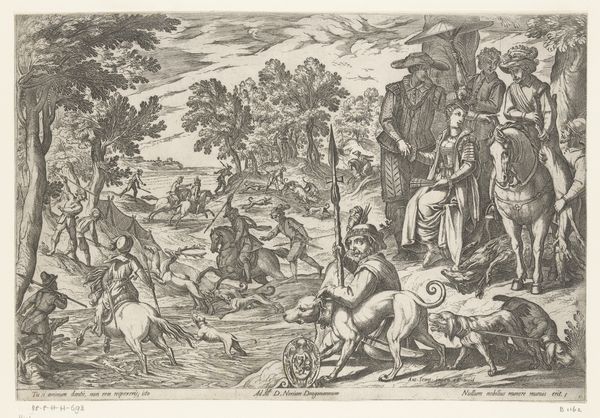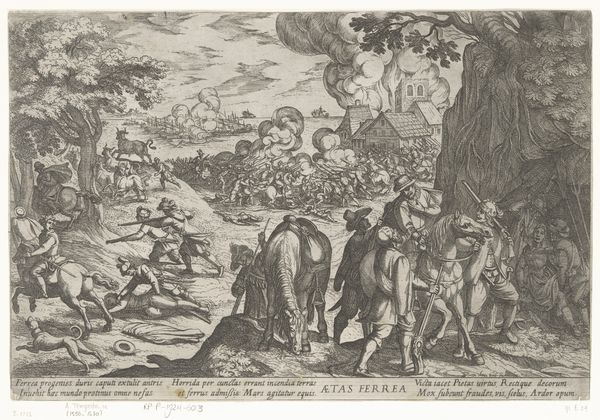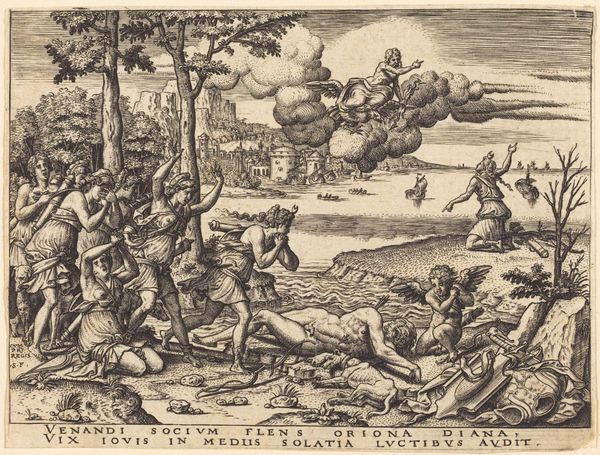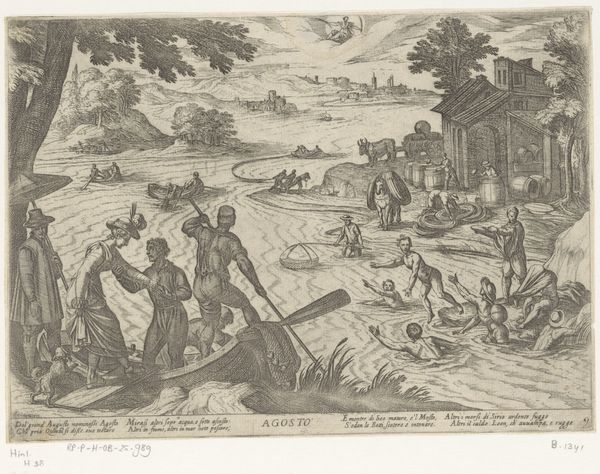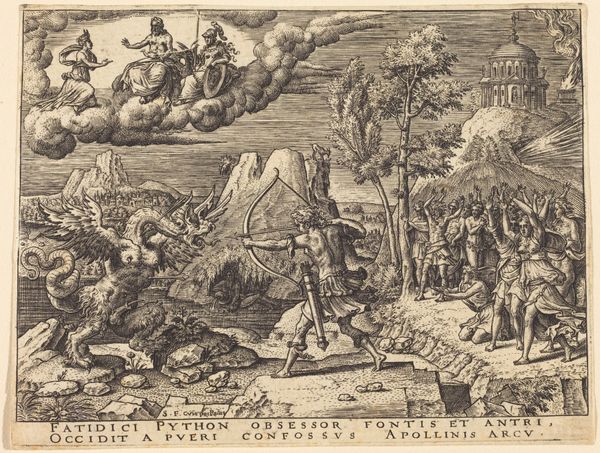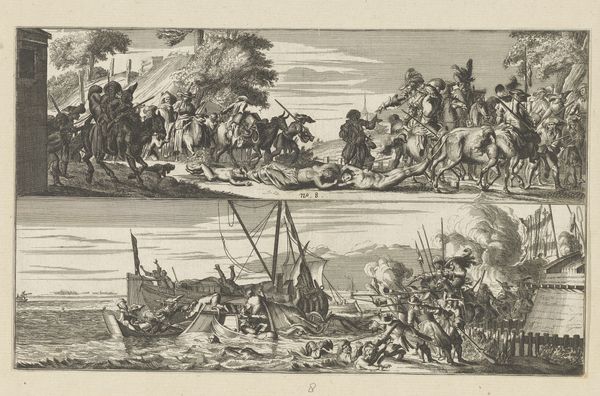
Plate 11: Alexander's Lion Hunt, from The Deeds of Alexander the Great 1608
0:00
0:00
drawing, print, ink, engraving
#
drawing
#
ink drawing
#
baroque
# print
#
landscape
#
figuration
#
ink
#
line
#
history-painting
#
engraving
Dimensions: Sheet: 8 11/16 × 11 1/4 in. (22 × 28.5 cm)
Copyright: Public Domain
Curator: Let's examine Antonio Tempesta's engraving from 1608, "Plate 11: Alexander's Lion Hunt, from The Deeds of Alexander the Great," housed right here at the Met. It's quite dynamic, wouldn't you say? Editor: Immediately, I’m struck by the sheer violence depicted. The foreground figures engaged in this hunt, Alexander prominently among them, against the backdrop of what appears to be a vast, almost impersonal army, sets up a troubling power dynamic that feels particularly resonant today. Who gets to enact violence, and why? Curator: Absolutely. This work is one of a series that served to illustrate, and perhaps even lionize, Alexander's purported exploits. These prints circulated widely, shaping his image in the public eye. What do you make of that shaping? Editor: That raises interesting questions. The distribution of these prints functioned, in part, as propaganda. It cemented the idea of Alexander not just as a conqueror, but as a divinely appointed figure of immense strength and valor. The image is crafted for maximum impact, but the human cost isn't made visible. We could consider, for instance, the colonial implications in the modern receptions of the "Great Man" narratives. Curator: The detail, typical of Baroque art, does underscore the drama of the scene, right? Notice how Tempesta uses the swirling lines and crowded composition to convey the chaotic energy of the hunt? Editor: Certainly, but that chaos masks a very ordered structure of power. Even the landscape—or rather, the depiction of nature as a space to be dominated— speaks to a broader cultural narrative of human exceptionalism and dominion over the natural world, a view that directly enabled empire. Consider, too, the subtext regarding the role of hunting—who has the right, and ability, to participate? Curator: A key aspect is the heroic presentation of Alexander. While brutal, the scene presents a deliberate assertion of strength. But, that brings in some nuances with the art historical reception. We do still value the craftmanship even as our perspective adjusts over time. Editor: Right, while engaging in a critique, we acknowledge its existence and persistence in cultural memory. These works persist; the question is whether we can also develop methods to account for that larger historical context of injustice and the narratives of legitimization they advanced. Curator: A compelling framework. This engraving then, allows us to reconsider how heroic narratives are constructed, circulated, and ultimately, believed. Editor: Indeed. By interrogating works like Tempesta's "Alexander's Lion Hunt," we confront the uncomfortable truths of the past and gain crucial perspectives for navigating the complexities of our present.
Comments
No comments
Be the first to comment and join the conversation on the ultimate creative platform.
